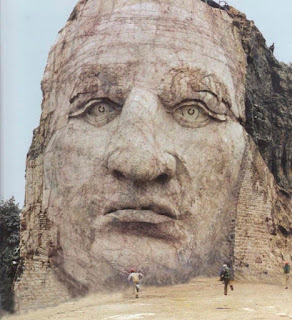An incomplete sculpture of Lakota Warrior Crazy Horse has been under construction since 1948
With an estimated completion date of 2037, including the addition of the warrior's body and the horse he will be riding. During the 19th century, numerous Native American tribes engaged in well-known conflicts with the American Government, particularly in the latter half of the century. One of the most significant battles in U.S. history was the Battle of Little Bighorn, where Crazy Horse, a Sioux leader, and his warriors triumphed over General George Custer.
Crazy Horse displayed bravery in leading his tribes in several significant battles throughout the 1800s, but eventually had to surrender to American forces. Following his surrender, his death on September 6, 1887, while in government custody, remains a subject of controversy. Fast forward to 1939,
Lakota Chief Henry Standing Bear corresponded with Polish-American architect Korczak Ziolkowski, requesting the creation of a monument to honor Crazy Horse's legacy. The warrior was remembered and revered by his people for his courage, leadership, and unwavering spirit.
When construction commenced in 1948, Ziolkowski estimated that completing the monument would take approximately 30 years. However, this projection proved to be a significant underestimation, as the project remains unfinished even after seven decades (Ziolkowski passed away in 1982). Numerous challenges have contributed to the delays, including the complexity of carving the sculpture into the side of a mountain, requiring appropriate equipment and contending with adverse weather patterns. Funding has also been an ongoing issue.
Currently, there is no set deadline for the completion of the monument. Only the head of Crazy Horse has been finished, with the hand, arm, shoulder, hairline, and the top of the horse's head slated for completion within the next 15 years.





Comments
Post a Comment